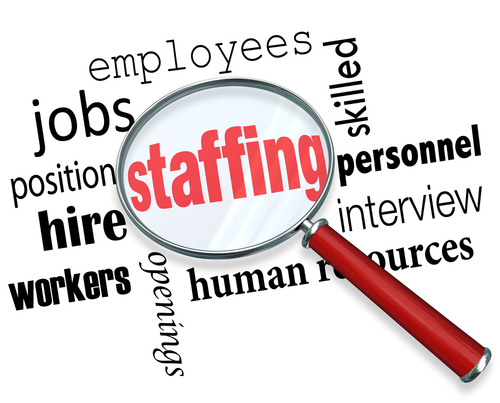Employers are facing tough decisions when it comes to full-time, part-time, and contingent employees and their bottom line. Some organizations are considering the possibility of employing a contingent workforce, comprised of temporary workers or contractors, to perform necessary functions. After all, payroll taxes, benefit costs, and other employee-centric issues may be diminished by relying on these employees. And this allows employers to be more flexible with their workforce needs over time.
 |
"This is a field that going to be changing. Technology changes how we work. We've got people all over the world working for our organizations. Contingent workers is something that's become even more important as we grow with flexible workforce needs. And needing to have employees who really understand the business that we are in; maybe having technical expertise and efficiencies. And allowing us as an employer to bring people in for a very specific time and space." Amy Letke told us in a recent BLR webinar, explaining some of the benefits of this setup.
Let's take a look at what a contingent workforce is and a couple of the risks involved.
What is a Contingent Workforce?
"Contingent workers are designed and defined as non-traditional and non-employee workers. The most common contingent workers are those leased folks, temporary staffing folks, interns, and independent contractors." Letke explained.
Leased employees are workers who are officially employed by a professional employer organization (PEO), which is responsible for overseeing all HR-related functions for the business owner. The leasing company is the official employer. Employee leasing is a contractual arrangement between the business owner and the leasing company, the PEO.
Temporary staffing agency employees are workers employed by the agency which recruits, screens, and hires individuals who are then placed with client companies on either a temporary or project-specific basis.
Risks of a Contingent Workforce
There are two primary risks (each with additional risks for specific issues). The first is misclassification of contingent workers. The second is problems with the co-employment situation. Let's take a look at each.
Risk 1: Improperly Classifying Contingent Workers
It is important to classify workers properly because of taxes, benefits plans under the Employee Retirement Income Security Act (ERISA), multiple employment laws, and the risk of a civil lawsuit for classification errors.
Risk 2: Co-employment Issues
Co-employment (also called joint employment) is a legal doctrine which applies when two businesses exert some control over an employee's work or working conditions. Relationships between employee leasing firms (PEOs) or temporary staffing agencies and the business who uses the employees are typically co-employment situations.
The major areas of concern in these co-employment relationships are compliance with the FLSA, FMLA, and federal laws which prohibit discrimination in employment (the ADA, ADEA, Title VII of the Civil Rights Act, and the EPA). Just because there is a co-employment relationship does not mean the employer's liability ceases.
For more information on using a contingent workforce, order the webinar recording of "The Contingent Workforce: How to Strategically Integrate Temps and Contractors to Fulfill Your Full-Time Needs." To register for a future webinar, visit http://store.blr.com/events/webinars.
Amy Letke, SPHR, GPHR, is the founder and CEO of the HR consulting and HR outsourcing company HR Integrity, Inc. She has 20 years of progressive experience in human resources management and senior leadership in various industries.

It’s surprising how many employers incorrectly believe that they don’t have to worry about liability for leased/temp/etc. employees.